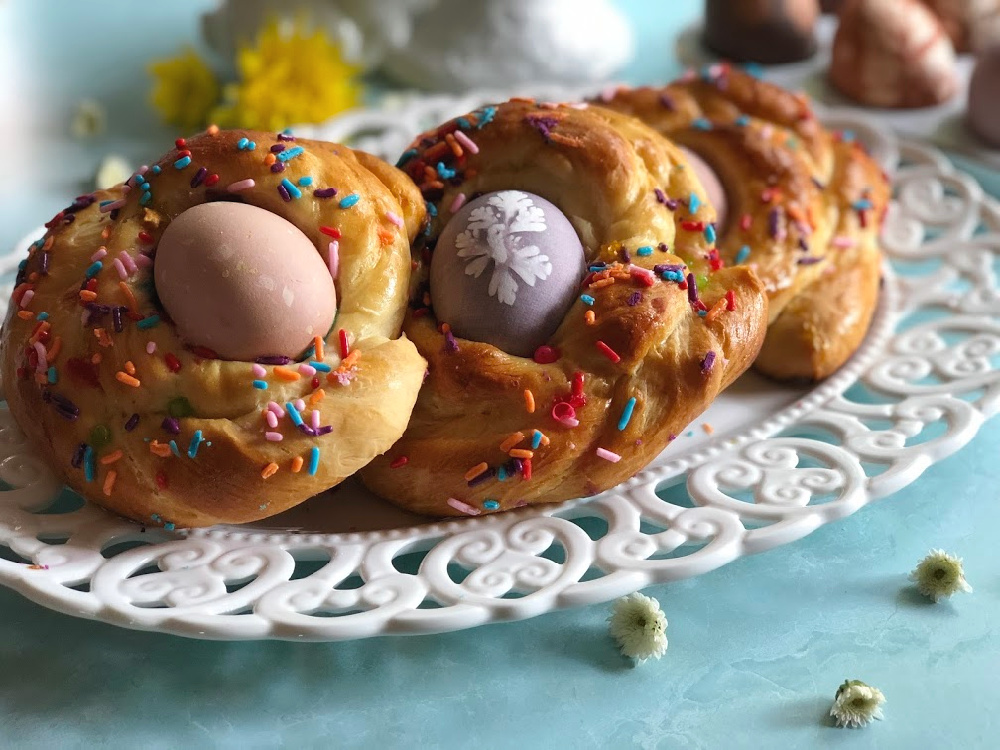
The European Easter bread is also called “Monas de Pascua.” It is a soft braided bread and a classic bakery item for the season.
The shape of the Easter braided bread simulates a crown of thorns and has an egg placed in the center representing the rebirth of Christ. Europeans have seasonal classic bakery items available year-round. And the Monas de Pascua is one of our favorites.
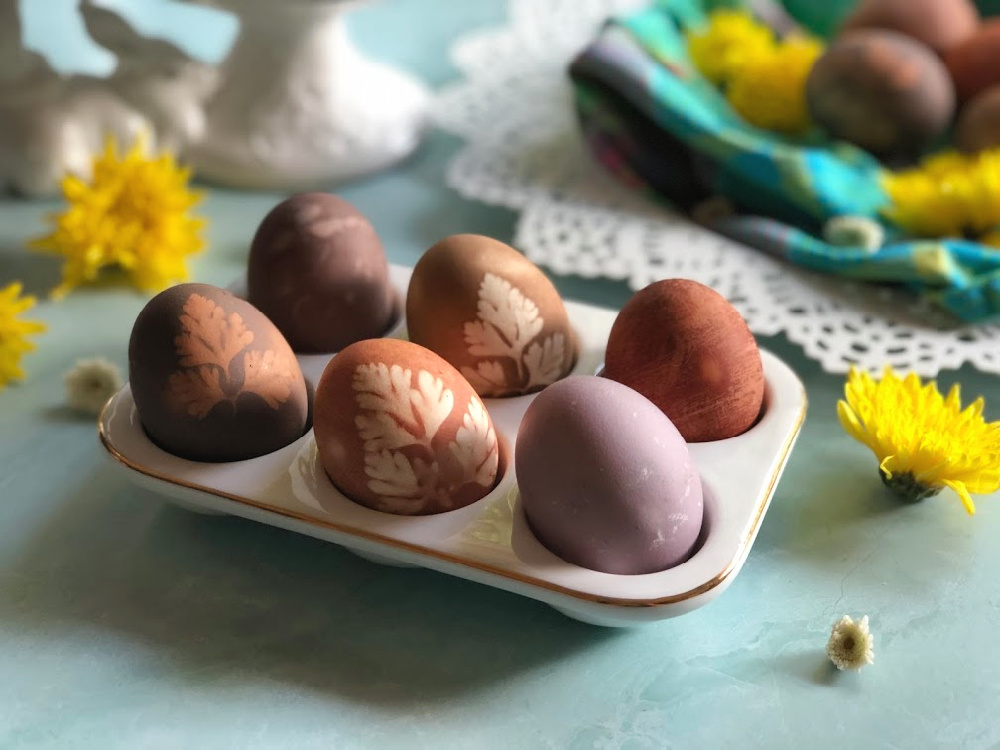
The European Easter bread is similar to a brioche, slightly sweet, and tender to the bite. The same recipe has many interpretations, and bakeries around Spain add different toppings. Some could be sugar, sesame seeds, or almonds too.
The braided bread can have three braids to represent the epiphany or two. Some are not braids, the forms are buns, and the raw egg inserted in the middle.
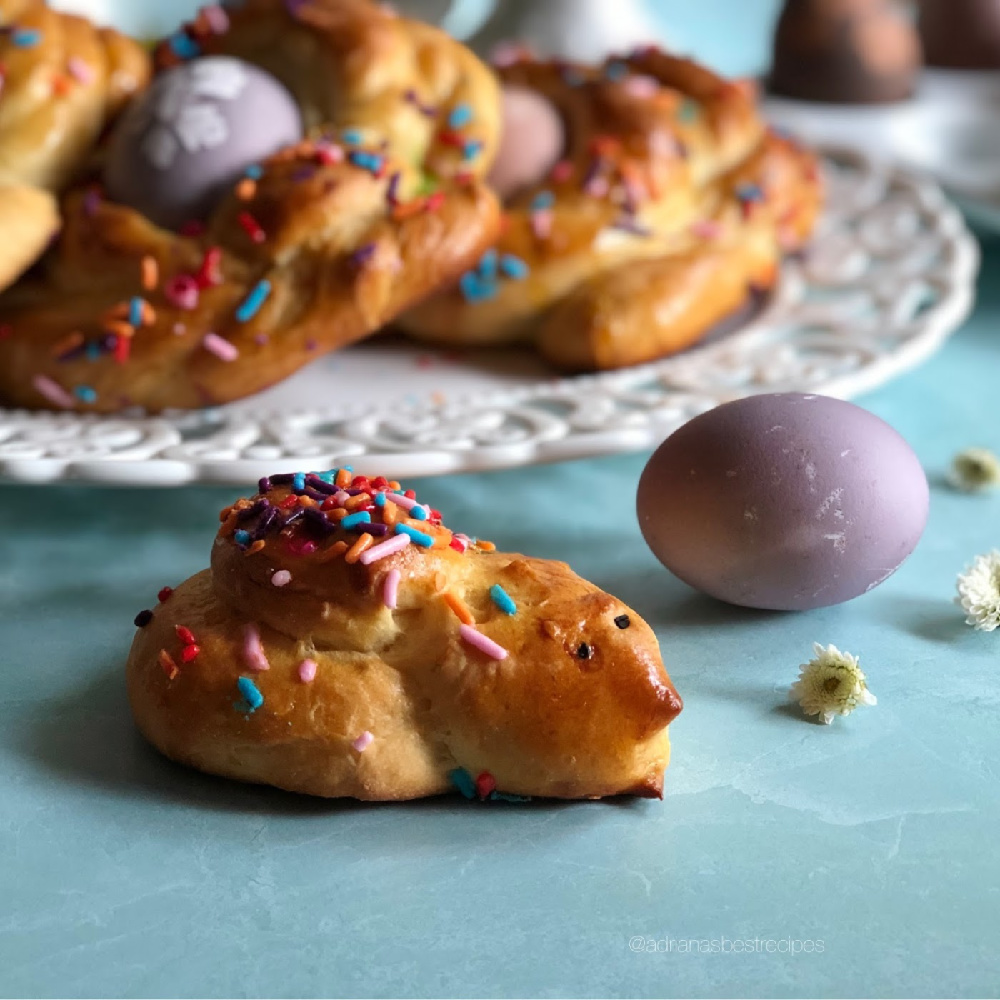
There are other kinds of Easter bread that are like buns and finished with a sugar topping. The name of those is “pan quemao” because the sugar is slightly caramelized in the baking process.
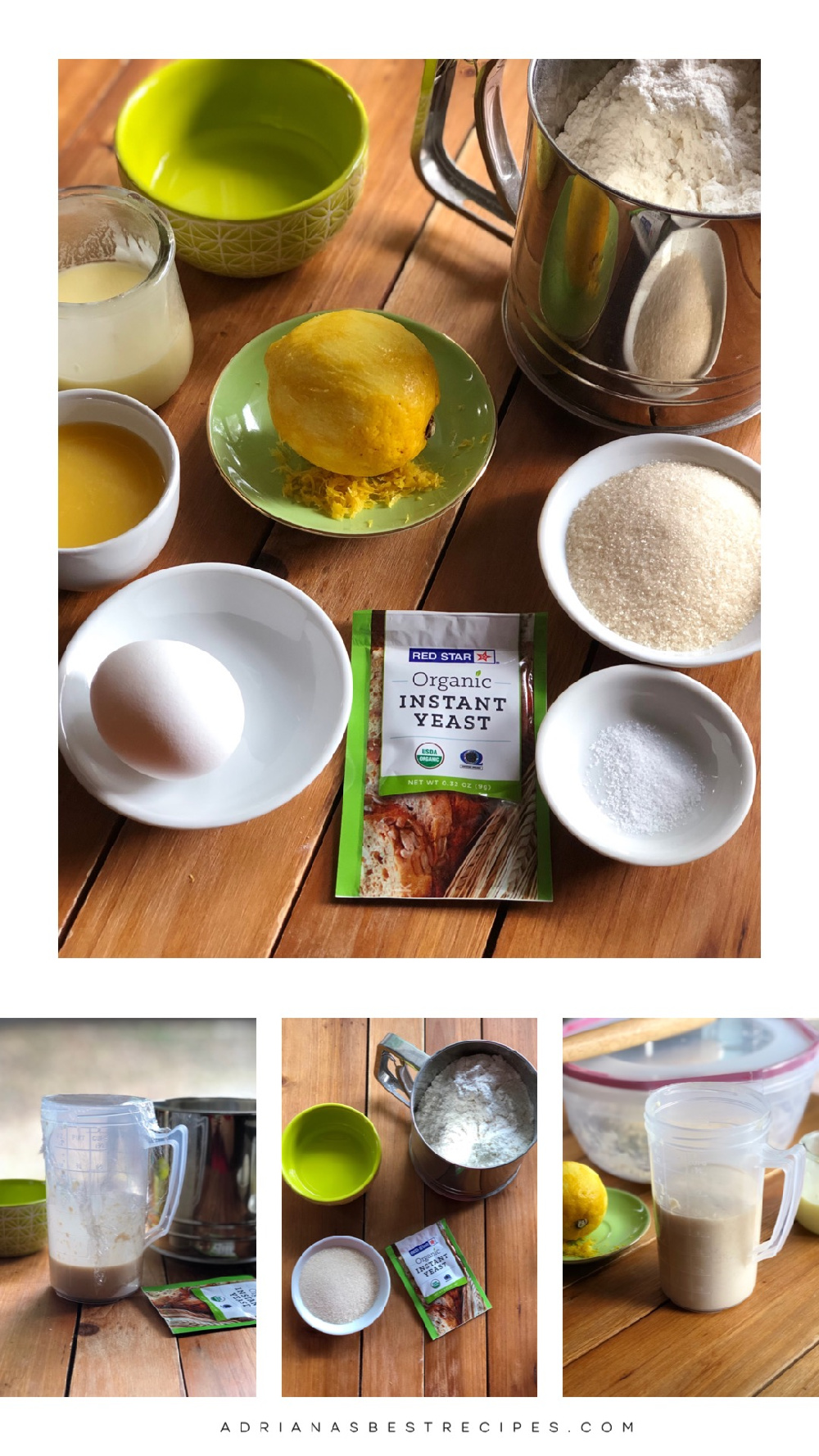
Making braided bread for Easter is a family tradition.
In my opinion, all forms of homemade bread are delicious; I am genuinely a bread fan. I also have Spaniard blood as part of my heritage.
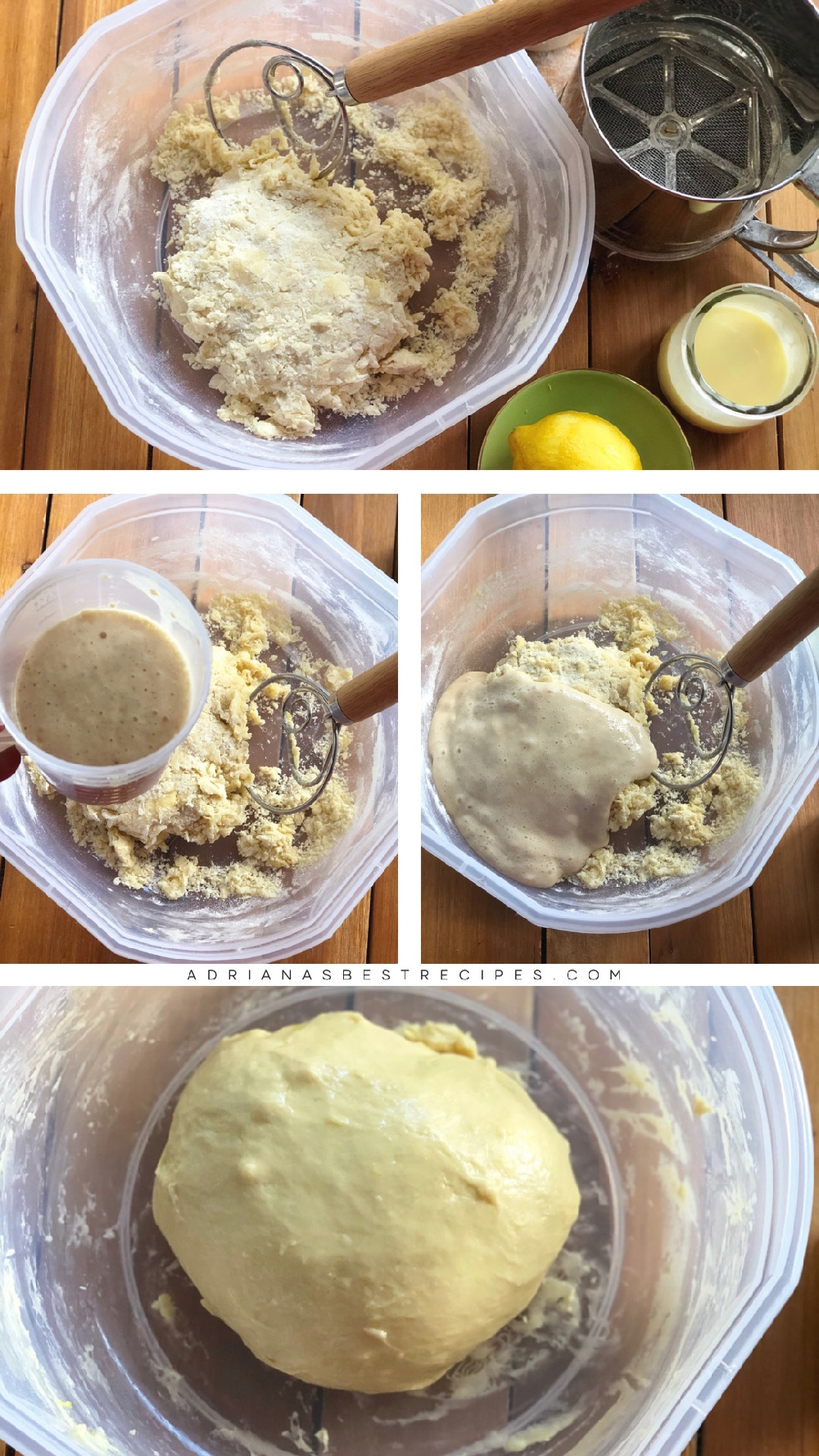
Many of the classic baking recipes that Europeans love my mom used to prepare at home. An example of this is the European easter bread, which never failed in the family table.
In Spain, the Easter braided bread is called “Monas de Pascua.” It has a round-shaped bread simulating crown of thorns worn by Jesus Christ. This wreath has an egg placed in the center representing the rebirth of Christ rising from the dead.
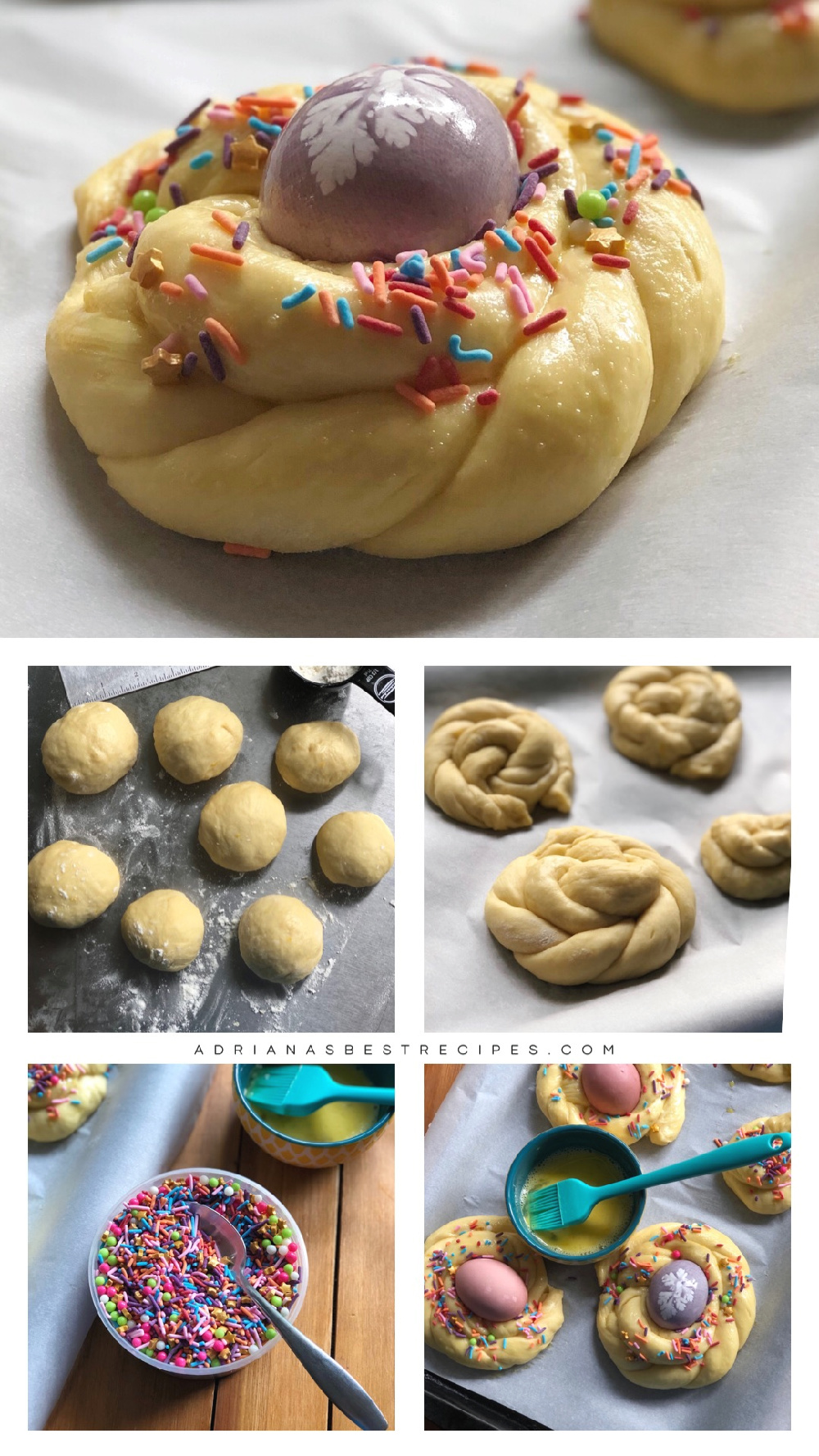
Serving or gifting European Easter bread is a great idea. They are colorful, sweet, and very soft. I have not met somebody that would not appreciate a homemade bread.
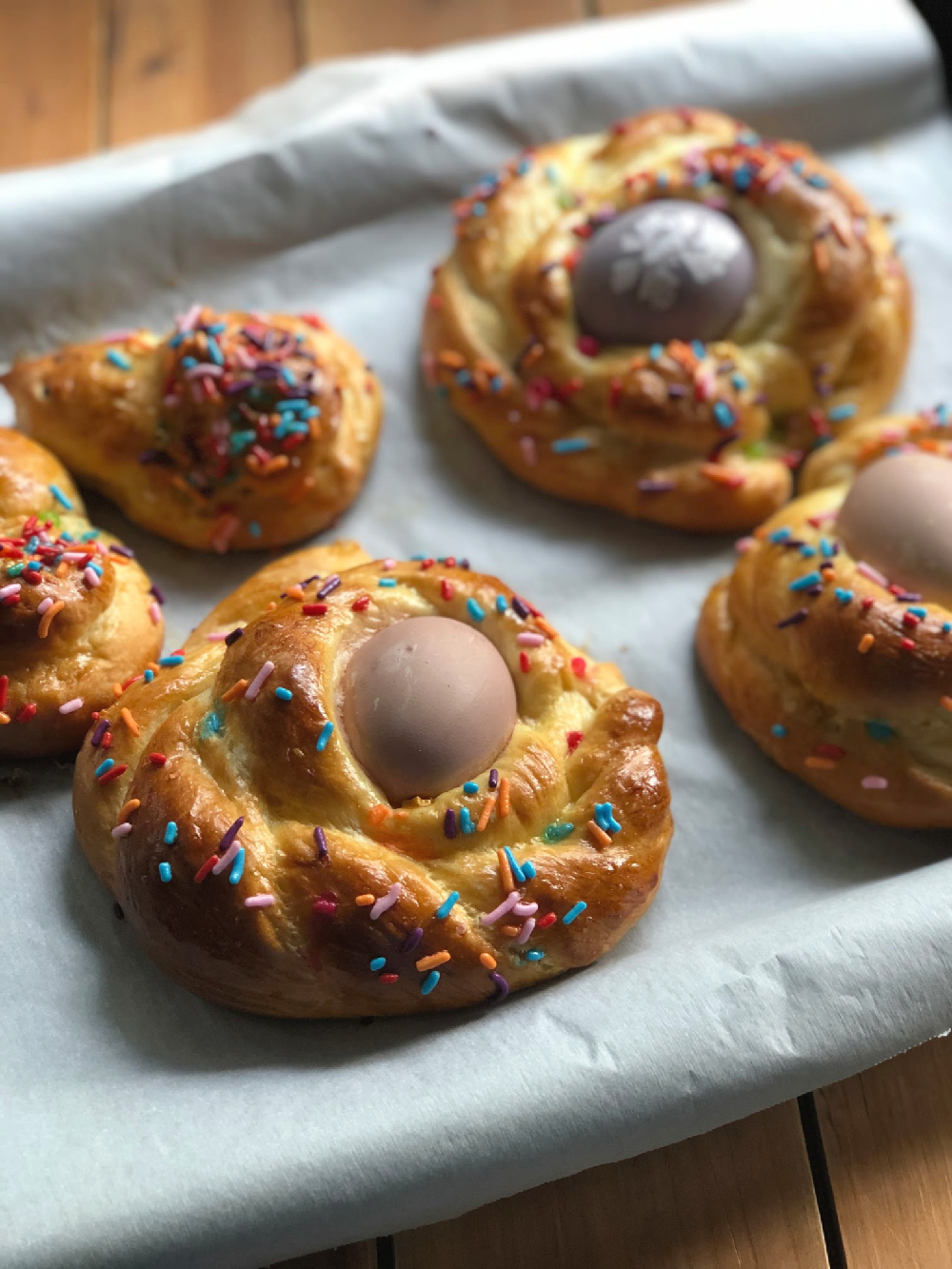
Tips for making the best European Easter Bread
- Use sifted all-purpose flour.
- Ferment the yeast with lukewarm water, sugar, and flour.
- Knead the Easter bread dough a minimum of 20-40 minutes. The more you knead, the best the bread will become.
- Use raw, decorated Easter eggs. Don’t worry. Those will cook in the oven with the bread.
- Use room temperature, eggs, and butter. That helps with better quality bread. Classic bakery goods require work but at delicious.
- The leavening of the dough is essential for the braided bread. If the temperature is too cold or the dough isn’t rising, place the dough in an airtight container with a lid and wrap it with a towel. Boil water and add it to a pan. Put the dough inside the oven (do not turn it on). In the lower section of the oven, place the container with the boiling water. Close the oven and wait for the dough to double in size.
- Bread is a labor of love, be patient. Enjoy the process, and it is very therapeutic.
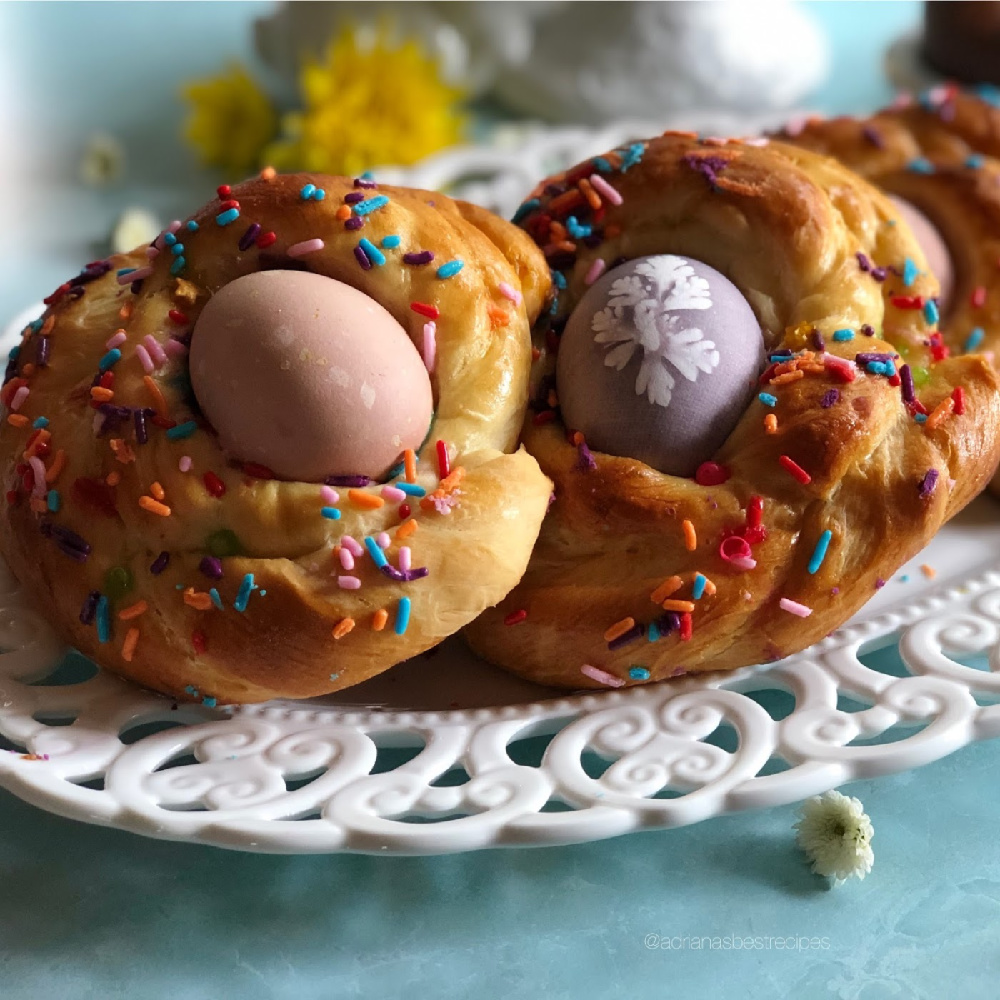
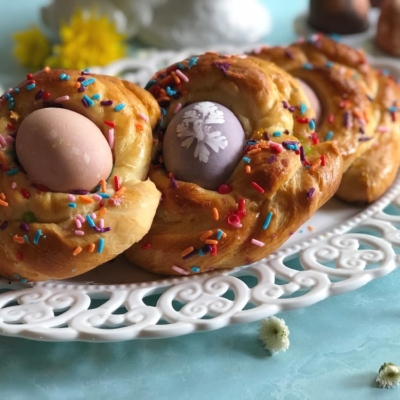
European Easter Bread
Equipment
- Danish dough whisk
- Stand Mixer
- Scale
- Sifter
- Mixing bowls
- whisk
Ingredients
- 9 grams dry yeast
- 265 grams all purpose flour sifted
- 50 grams cane sugar
- 1 pinch salt
- 70 grams orange juice can be replaced with milk
- 1 egg
- 65 grams butter melted
- 1/2 cup lukewarm water 100F
- 1 teaspoon lemon zest can be replaced with vanilla extract
Instructions
- In a container (preferably one with a lid) add 3 teaspoons of flour, and 2 teaspoons of sugar Mix and add 1/2 cup of lukewarm water (preferably 110F). Do not add hot water as it kills the yeast and won't rise. Close the container and let the yeast ferment for a while. Depending on the weather this copuldtake from 20 minutes up to an hour or more.
- In a mixing bowl add the orange juice, the egg, the sugar, and the salt. Whisk until the sugar dissolves. Add the sifted flour to the wet mix and incorporate using your hands or a Danish dough whisk. Cover and let the dough rest for a few minutes.
- Add the fermented yeast to the dough and transfer to the stand mixer or work with your hands. Add the butter in stages until all the butter is absorbed by the dough. When the dough has an elastic texture is ready.
- Place the dough in a container and rub it with cooking oil. Place the lid and let the dough double in size. Punch the dough and work it for 20 minutes. The more you work it the softer the bread will be.
- Form a cylinder and cut in four pieces. Then cut each piece again in half. Form balls and set aside.
- For forming the wreaths cut one ball in half and extend with your hands. Twist the two pieces and form a circle with each. Add a second piece and wrap around. Repeat the process and place the bread in a tray. Let the bread rise again. make sure to cover it with a cloth.
- Make an egg wash beating one egg and using it to paint each bread piece. Add colored sprinkles and insert a raw easter egg in the middle.
- Set the oven to 350F and bake the bread for 15 minutes. The raw egg will cook at the same time as the bread.
Video
Notes
- Use sifted all-purpose flour.
- Ferment the yeast with lukewarm water, sugar, and flour.
- Knead the dough minimum 20-40 minutes. The more you knead, the best the bread will become.
- Use raw, decorated Easter eggs. Don’t worry. Those will cook in the oven with the bread.
- Use room temperature, eggs, and butter. That helps with better quality bread.
- The leavening of the dough is essential. If the temperature is too cold or the dough isn’t rising, place the dough in an airtight container with a lid and wrap it with a towel.
- Boil water and add it to a pan. Put the dough inside the oven (do not turn it on). In the lower section of the oven, place the container with the boiling water. Close the oven and wait for the dough to double in size.
- Bread is a labor of love, be patient. Enjoy the process, and it is very therapeutic.
Nutrition
Have you tried this recipe? Snap a photo and tag us on Instagram and or Facebook using the handle @adrianasbestrecipes and this hashtag #ABRecipes Happy Eats!
- Tex-Mex Veal Fajitas with Melted Cheese - June 23, 2024
- Spicy Mango Pineapple Chutney Recipe - November 17, 2022
- Squash Blossom Quesadillas Recipe - November 10, 2022
